





I have always dreamed of having my gardens in bloom from early spring through the end of fall with no lapse in between. It hasn't happened yet, but I came upon a way of making sure it happens in the very near future. Here is a method you might want to start now, so that when the first days of spring arrive in 2009, you will be ready for Showtime in your gardens.
If you know the flower color, when it blooms, and for how long, you should be able to group plants with flowers that bloom at the same time in beautiful combinations. For instance, if you are looking for plants to use in a complementary color scheme of yellow and purple, yellow-flowered yarrow (Achillea) in 'Moonshine' or 'Coronation Gold', and purple sage (Salvia) are a classic combination that bloom together for all three of the summer months. Bloom dates vary across the country, however, but it is a pretty sure thing that Northern gardeners will see plants coming into and out of bloom approximately 10 to 21 days later than southern gardeners. The best way to track bloom sequence and duration is to keep a journal or mark your calendar when your plants bloom in your garden, or in those near you. An even better way, I have found, is to keep handy a camera that gives you a visible date on each photo. If you keep a journal and a photo, you will be able to keep them both in order. It is a great way to have all you need at hand to play around with workable color combinations.
Another thing you might consider is form and texture. Plants don't have to bloom to be beautiful. Ferns don't flower, but what self respecting shade garden is without a fern? Ferns have such a beautiful texture with their lacy fronds, they don't even need to bloom. Sedum is valued for its form much more than for its fall bloom. And Russian sage and meadow rue can add tone to a garden that might be overwhelmed with all bold plants. All things considered, it is still nice to have blooms from March till November.
This list should give you and idea of when selected easy to grow perennials begin blooming. I have placed an asterisk beside those plants that bloom for more than 10 weeks if given the proper care.
Spring: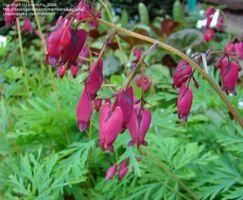
Bergenia
Old fashioned bleeding heart (Dicentra spectabilis)
Blue star flower (Amsonia)
Heartleaf Brunnera
Columbine (Aquilegia)
Bearded Iris
Lady's mantle (Alchemilla mollis)
Lenten rose (Helleborus)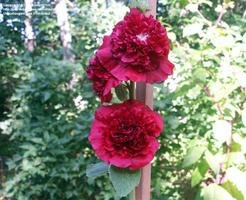
Bethlehem sage (Pulmonaria)
Lupine (Lupinus)
Peony
Creeping Phlox (Phlox subulata)
Woodland Phlox (Phlox divaricata)
Solomon's seal (Polygonatum)
Summer: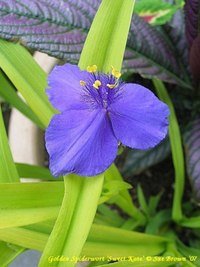
*Spiderwort (Tradescantia)
*Black Eyed Susan (Rudbeckia)
*Purple coneflower (Echinacea purpurea)
*Threadleaf coreopsis (Coreopsis verticillata)
Daylily (Hemerocallis)
Foxglove (Digitalis)
Goldenrod (Solidago)
*Hollyhock (Alcea)
Hosta
Joe Pye weed (Eupatorium)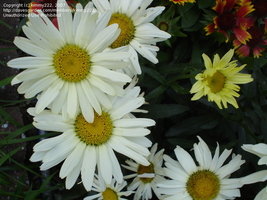
Meadow rue (Thalictrum)
Penstemon
*Tall phlox (Phlox paniculata)
*Rose Mallow (Hibiscus)
*Russian sage (Perovskia atriplicifolia)
*Salvia
*Sedum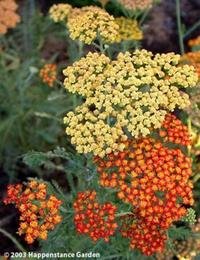
*Shasta daisy (Leucanthemum)
*Verbena
*Yarrow (Achillea)
Fall:
*Aster (Symphyotrichum)
Hardy mums (Chrysanthemum)
Ornamental grasses
Toad lily (Tricyrtis)
Your list might be slightly different, depending on your zone, but the method of cataloging would be the same. I started thinking of this idea last spring when my iris stopped blooming and all I had to enjoy while I waited for my daylilies was the mint green of the Euphorbia. I decided right then that something had to change. 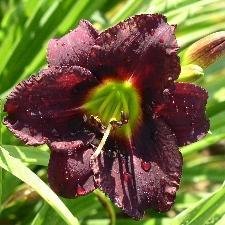 It won't happen overnight, but I can already tell a slight difference this year. A plan in hand is a good thing to have during those dreary days of January and February. Add a catalog or two to your journal and last year's dated photos, and you will suddenly find your self with a vision. Be sure you have your camera when you see each new bloom this summer. I promise you a happy late winter and a beautiful 2009 if you do.
It won't happen overnight, but I can already tell a slight difference this year. A plan in hand is a good thing to have during those dreary days of January and February. Add a catalog or two to your journal and last year's dated photos, and you will suddenly find your self with a vision. Be sure you have your camera when you see each new bloom this summer. I promise you a happy late winter and a beautiful 2009 if you do.
Photos are from PlantFiles and the intro photo belongs to the author. Thanks to Kniphofia, Melissa_Ohio, Calif_Sue, Happenstance, Toxicodendron, and Kimmy222.
Source: 100 Easy Perennials, Natalia K. Hamill, Publications International, Ltd., and The Country Garden, John Brookes, Crown Publishers. New York.
Thank you, Gloriag for the inspiration you unknowingly gave me all the way from Virginia.
(Editor's Note: This article was originally published on June 2, 2008. Your comments are welcome, but please be aware that authors of previously published articles may not be able to promptly respond to new questions or comments.)
Copyright © www.100flowers.win Botanic Garden All Rights Reserved